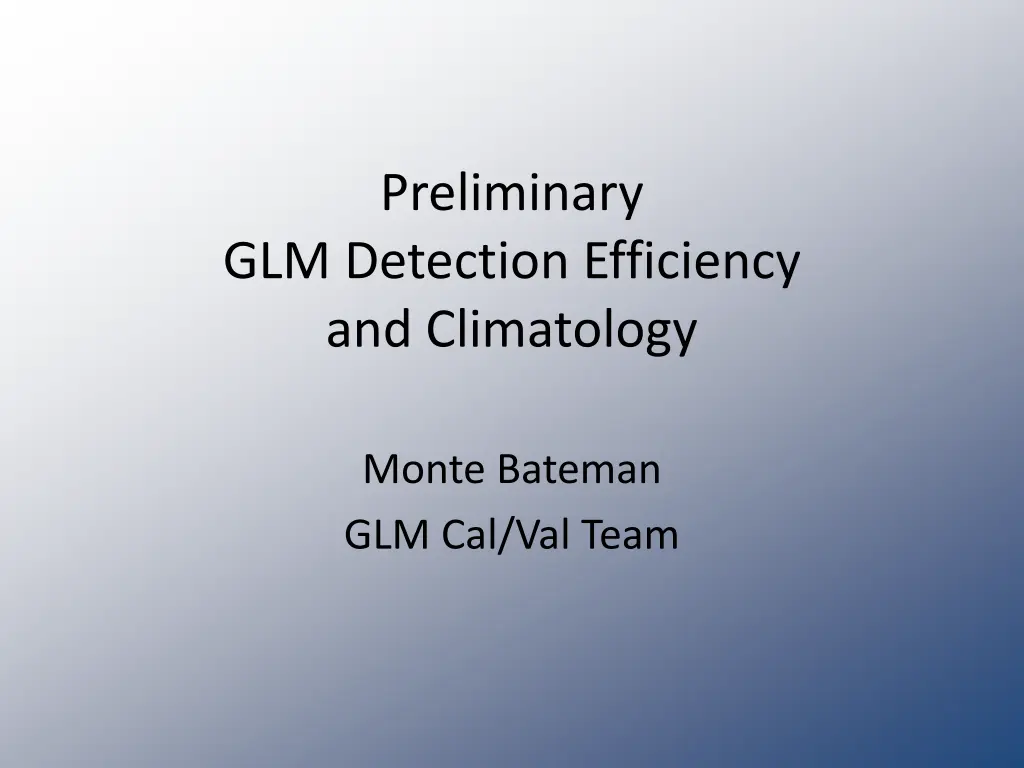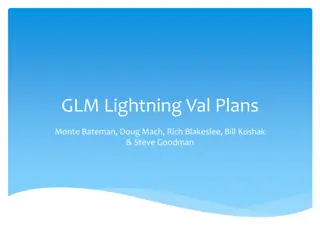
GLM Detection Efficiency and Climatology Analysis
Explore the detection efficiency and climatology analysis of GLM lightning data in comparison to other systems over an 8-month period. Detailed maps and charts illustrate the findings from Jan-Aug 2018.
Download Presentation

Please find below an Image/Link to download the presentation.
The content on the website is provided AS IS for your information and personal use only. It may not be sold, licensed, or shared on other websites without obtaining consent from the author. If you encounter any issues during the download, it is possible that the publisher has removed the file from their server.
You are allowed to download the files provided on this website for personal or commercial use, subject to the condition that they are used lawfully. All files are the property of their respective owners.
The content on the website is provided AS IS for your information and personal use only. It may not be sold, licensed, or shared on other websites without obtaining consent from the author.
E N D
Presentation Transcript
Preliminary GLM Detection Efficiency and Climatology Monte Bateman GLM Cal/Val Team
Sources Compare GLM against ENTLN + WWLLN and GLD360 Two systems whose domains most closely match the FOV of GLM
Technique Calculate DE in 1 x 1 bins Over 8 months, Jan-Aug 2018 If a GLM flash is within 0.5s and a range of 50km of a gnd system detect, increment bin DE fraction = coinc / total Single number average DE over whole FOV
Stoplight Chart: Color Code If > 0.7, green If >= 0.50, darkgreen If >= 0.25, light gray If > 0.0, dark gray If GLM detect with no gnd detect, yellow If gnd detect with no GLM, red
Climatology Jan-Aug 2018 GLM and ENTLN + WWLLN
Climatology Jan-Aug 2018 GLM and GLD360
Summary GLM shows good DE everywhere except NW CONUS In NW CONUS, comparison with GLD360 seems more favorable than with ENTLN + WWLLN Over whole GLM FOV, DE > 0.70 every day this year Some days as high as 0.90






















